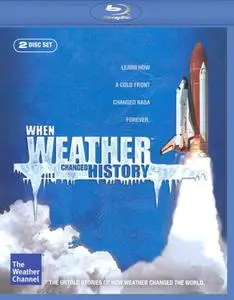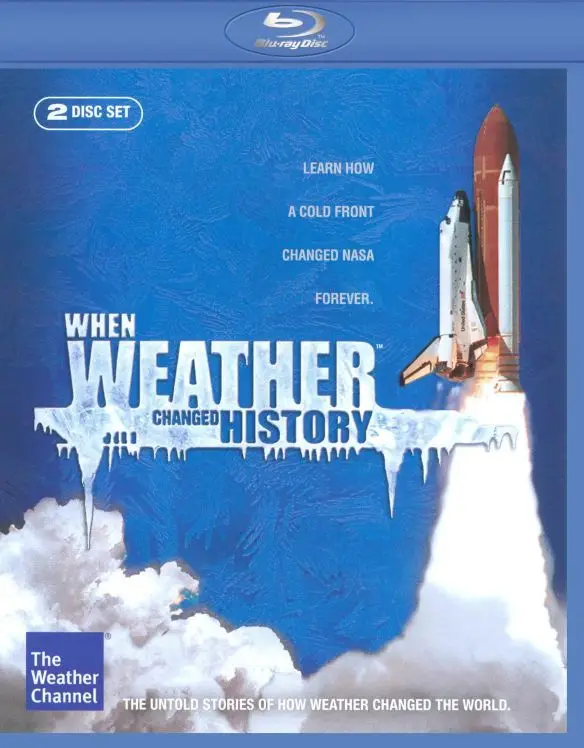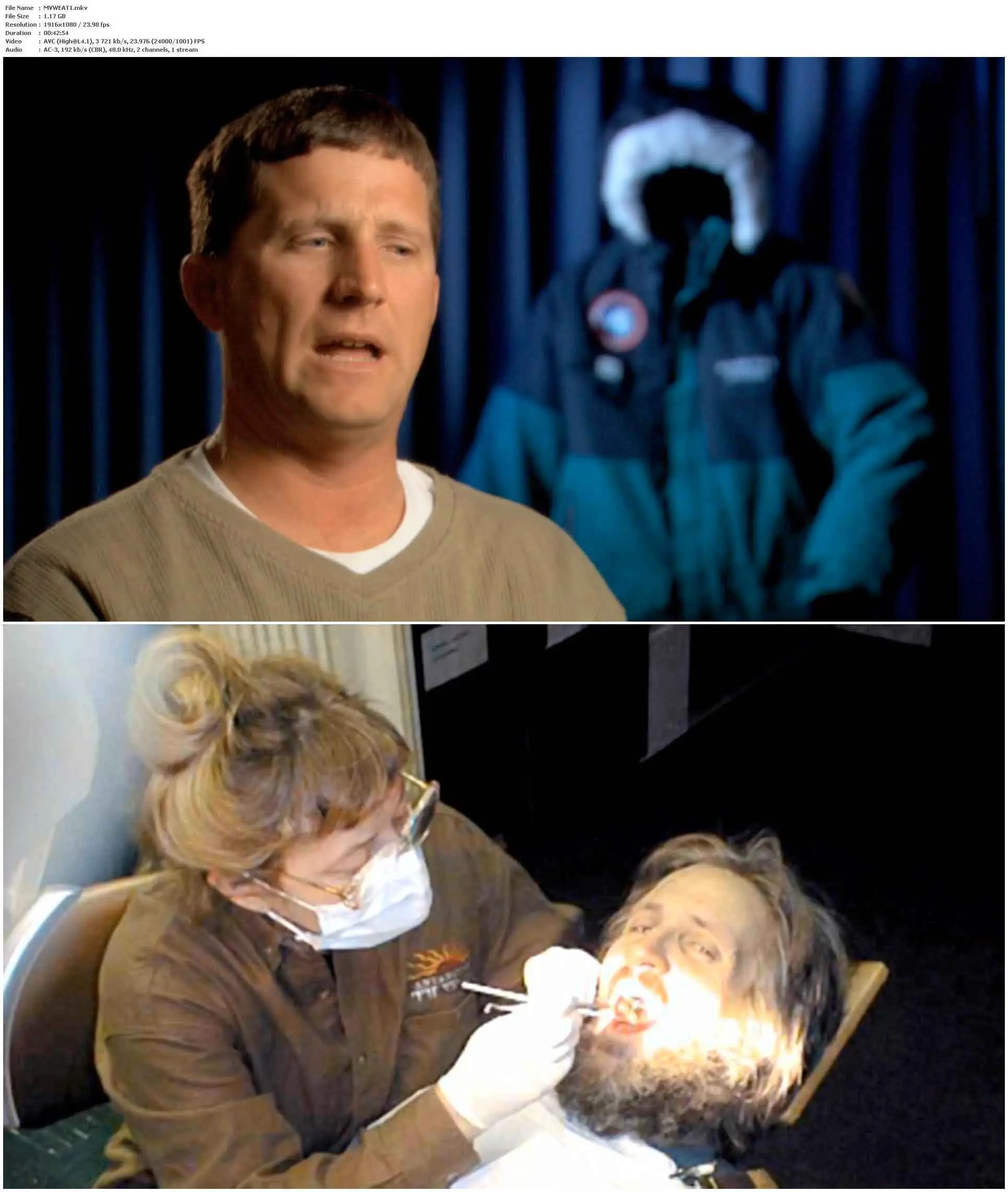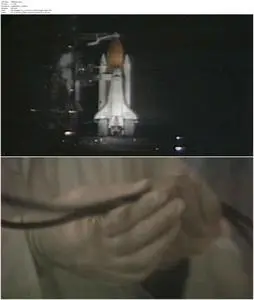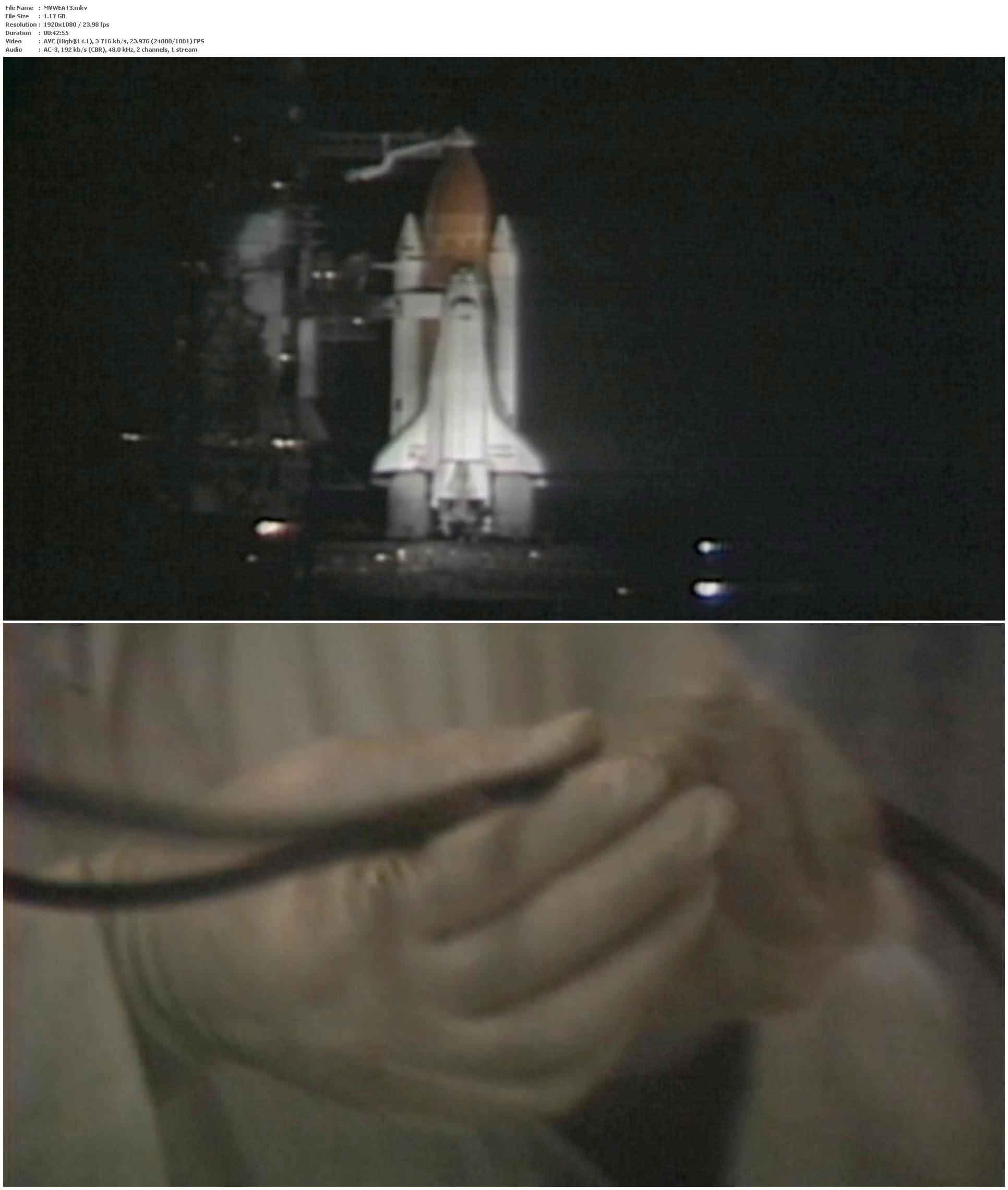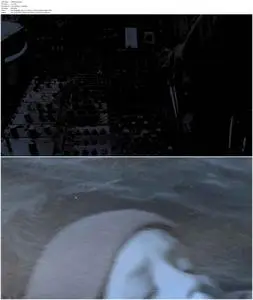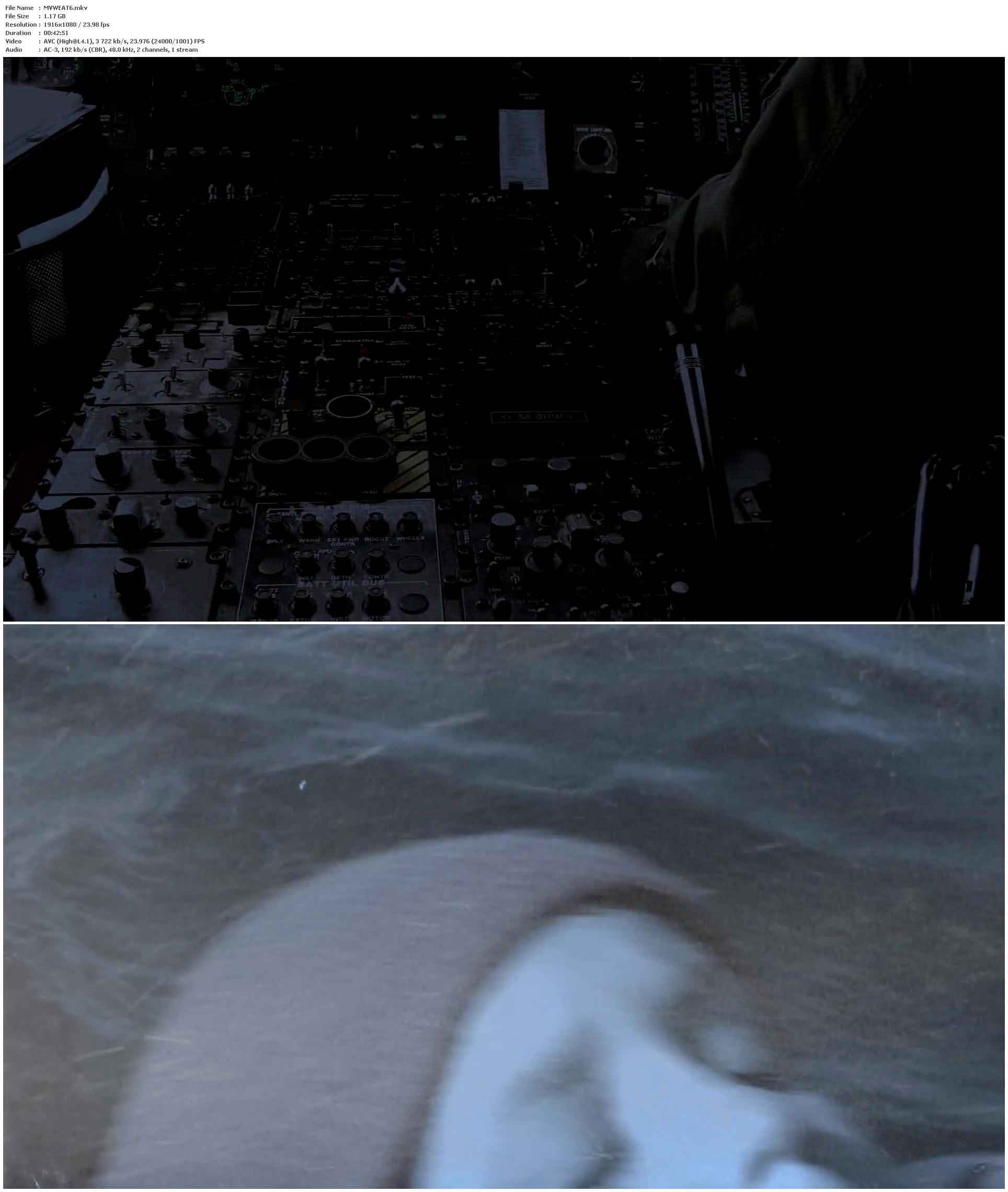The Weather Channel - When Weather Changed History: Series 1 (2009)
BDRip 1080p | 9x42mn | 1916x1080 | MKV AVC~3700Kbps | AC3@192Kbps 2CH | 10.50 GiB
Language: English | Genre: Documentary | Subs: None
BDRip 1080p | 9x42mn | 1916x1080 | MKV AVC~3700Kbps | AC3@192Kbps 2CH | 10.50 GiB
Language: English | Genre: Documentary | Subs: None
Throughout time weather has shaped history. NASA, World War II and historic heroic rescue attempts have all been impacted by the weather. This High Definition series from the "Weather Channel" uncovers the most powerful moments in history and the remarkable role played by Mother Nature.
Part 1: Rescue From The South Pole
Stuck dying in Antarctica. When Weather Changed History looks at the extraordinary efforts of a woman who discovered breast cancer during winter in Antarctica.
Feb. 1999: Dr. Jerri Nielsen, 46, is living her dream as the sole physician to 41 staff members at an isolated South Pole research station. Dr. Nielsen discovers a lump in one of her breasts, which by June, has grown to the size of a golf ball. Pilot Maj. George McAllister and members of the 109th Air National Guard fly one of the earliest recorded flights to the South Pole, making a daring rescue in intense Antarctic conditions and zero visibility.
Part 2: Battle of the Bulge
Hitler uses the weather as a weapon. During the Battle of the Bulge, soldiers had to fight in extreme winter conditions, but Hitler's army was ready.
Dec. 1944 – Jan. 1945: In the largest, bloodiest land battle ever fought by American soldiers, more than 1.1 million American, British and German men take part and nearly 20,000 are killed. In mid-December, the American army is low on supplies when the well-equipped German army releases a surprise, brutal attack on the Americans. As desperate Nazi troops use the cover of severe winter weather to counterattack Allied forces, weather conditions also hinder American attacks. Then a fortuitous break in the weather finally enables them to defeat the Germans and destroy the Third Reich, impacting the outcome of World War II.
Part 3: Challenger
Weather is biggest obstacle for NASA. Engineers say there are three types of weather conditions that can scrub a launch, as weather is the biggest reason to cancel. An independent commissioner finds that cold weather on launch day caused the failure of the O rings on the Challenger Shuttle.
Jan. 28, 1986: The space shuttle Challenger and seven crewmembers prepare for its tenth flight into orbit. Despite colder than average temperatures, the mission is given the go ahead. Seventy-three seconds after take off, the shuttle suddenly explodes – to the shock of all those watching below – killing all seven crewmembers. NASA and an independent investigative commission determine that a combination of events, some triggered by the cold weather on launch day, caused the failure of the O rings on the shuttle.
Part 4: Race to Nome
The Great Race of Mercy. Mushers today honor and recreate the historic trip by dog sled teams during the winter of 1925 where man and dog raced to save a village. In the winter of 1925, a deadly virus threatens Alaska. With an epidemic looming, the only hope is lifesaving medicine, brought in by dog sled, across hundreds of miles, in extreme weather conditions.
Jan. 1925: A diphtheria epidemic threatens the region near Nome, Alaska, and the only hope is lifesaving medicine hundreds of miles away. In the middle of winter, the 700-mile dog sled trip is the only option available. At a time when it normally takes a musher 15-20 days to make the trip over the old Iditarod Trail while dogs and drivers encounter blizzards and 50-below-zero cold, this trip brings the serum to Nome in a record five days and seven hours. The modern-day dog sled race, the Iditarod, commemorates those dog teams and drivers.
Part 5: The Great Mississippi Flood
Worst flood disaster in American History. Profound inequalities played out with deadly consequences for those who couldn't escape the Great Mississippi Flood. In the spring of 1927, America witnesses one of its greatest natural disaster to date.
Spring 1927: Perhaps America's greatest natural disaster deeply changes race relations, government and society in the Mississippi River Valley. A flood of more than 30 feet of water stands over land inhabited by nearly one million people. Almost 300,000 African-Americans are forced to live in refugee camps for months. The changes produced by the flood in the lower South ultimately foreshadow federal government intervention in the region's social and economic life. Today, many draw parallels between Hurricane Katrina and the 1927 flood.
Part 6: Rescue Swimmers
Jumping into danger to save lives. A new team of rescuers is born into the Coast Guard and the training is intense. When Weather Changed History takes a look at the Rescue Swimmers.
On Feb. 11, 1983, the 587-foot cargo ship was carrying 27,000 tons of coal along the Virginia coast bound for Massachusetts. When a blizzard swept offshore, the ship capsized, leaving only a handful of crewmembers alive. The Navy had a rescue swimmer program at that time, but not the Coast Guard. Both agencies responded to the accident, but collectively were only able to save three of the 34 crew.
Shortly after, the Coast Guard rescue swimmer program was born and its swimmers have since saved hundreds of lives, particularly shining during the aftermath of Hurricane Katrina in 2005.
Part 7: Potomac Crash
1982: Preparing to fly in a Nor' Easter. Air Florida Flight 90 took off from Washington National Airport in a snowstorm. Seconds into the flight the plane crashed into the icy Potomac River, killing 74 people. In this segment of When Weather Changed History, we learn the thought process that lead to the crash of the Air Florida flight in Washington, D.C.
Jan. 13, 1982: Air Florida Flight 90, with 79 people onboard, takes off from Washington National Airport in a snowstorm. Seconds into the flight, the plane crashes into the icy Potomac River, killing 74 people, including four people on the ground. The crash of Flight 90 changes commercial aviation. In the wake of the tragedy, new communication protocols are developed and stricter de-icing guidelines are enacted, making air travel safer.
Part 8: Crash of Delta 191
Surprise weather event crashes plane. When Weather Changed History takes us to August of 1985. Delta 191 was coming in for a landing at Dallas-Ft. Worth when a weather event tossed it to the ground.
Aug. 2, 1985: With 163 people onboard, Delta Flight 191 prepares to land at the Dallas/Fort Worth airport. Instead, it crashes about 100 yards from the runway, killing 137. Investigators later prove that just before landing, the plane flew into a weather phenomenon known as a microburst, generating the most violent form of wind shear. This conclusion leads to widespread improvements in wind shear detection and severe weather training for pilots.
Part 9: Operation Eagle Claw
Weather a factor in Iran hostage rescue. Islamic extremists overrun the U.S. Embassy in Tehran, Iran, taking 66 American hostages demanding the release of their deposed shah. As the military puts together plans to rescue hostages taken in 1980, they know they have to go during perfect weather.
It is one of the greatest disasters in the history of American military and secret service actions: In April 1980, "Operation Eagle Claw" is intended to free 52 US citizens from Iranian hostages. The whole thing ends not least because of a sandstorm in a fiasco with numerous deaths. The results led to a new strategy for desert warfare and "Operation Desert Storm" in the Iraq war in the early 1990s. This exciting TV documentary illuminates the background of this disaster.
Nov. 4, 1979: Islamic extremists take 66 American hostages at the U.S. Embassy in Tehran, Iran. The following April, military pilots engage in a mission for recovery in the Iranian desert. At first the weather is perfect, but after crossing the Iranian border, the helicopter and airplane pilots find themselves in the middle of a suspended dust storm called a haboob. Weather conditions and insufficient forecasting help cause disastrous results for "Operation Eagle Claw."


